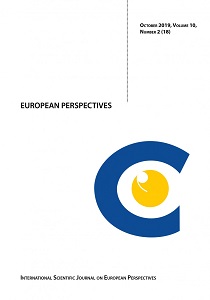European Integration Process Thirty Years after the End of the Cold War
European Integration Process Thirty Years after the End of the Cold War
Author(s): Milan JazbecSubject(s): Politics, Regional Geography, Political history, Cold-War History, EU-Accession / EU-DEvelopment
Published by: Mednarodni inštitut za bližnjevzhodne in balkanske študije IFIMES
Keywords: The Peace of Westphalia; the French Revolution; the End of the Cold War; European integration process; production of values; the Western Balkans;
Summary/Abstract: This paper discusses what is, to our belief, one of the major policy achievements in the European history since the Peace of Westphalia – the ability to pursue values. In particular, democracy, human rights, market economy, free and fair elections, and freedom of media. These are produced by the European integration process that is understood to be a structural output of activities of the key international governmental organizations functioning on the broader European as well as on the global level (the EU, NATO, the OSCE, and the Council of Europe). This synergetic functioning has, in the period after the Second World War, and after the end of the Cold War in particular, transformed Europe into the continent with the highest living standard, an outstanding system of values, and other achievements. The European integration process is a European diplomatic, political, and historical innovation. This article discusses its origin, evolution, and development in the period after the end of the Cold War. Combined with the post Second World War period, this time frame represents five decades of integration shaping and thirty years of an intensive structural rise.
Journal: International scientific journal European Perspectives
- Issue Year: 10/2019
- Issue No: 2 (18)
- Page Range: 127-152
- Page Count: 26
- Language: English

